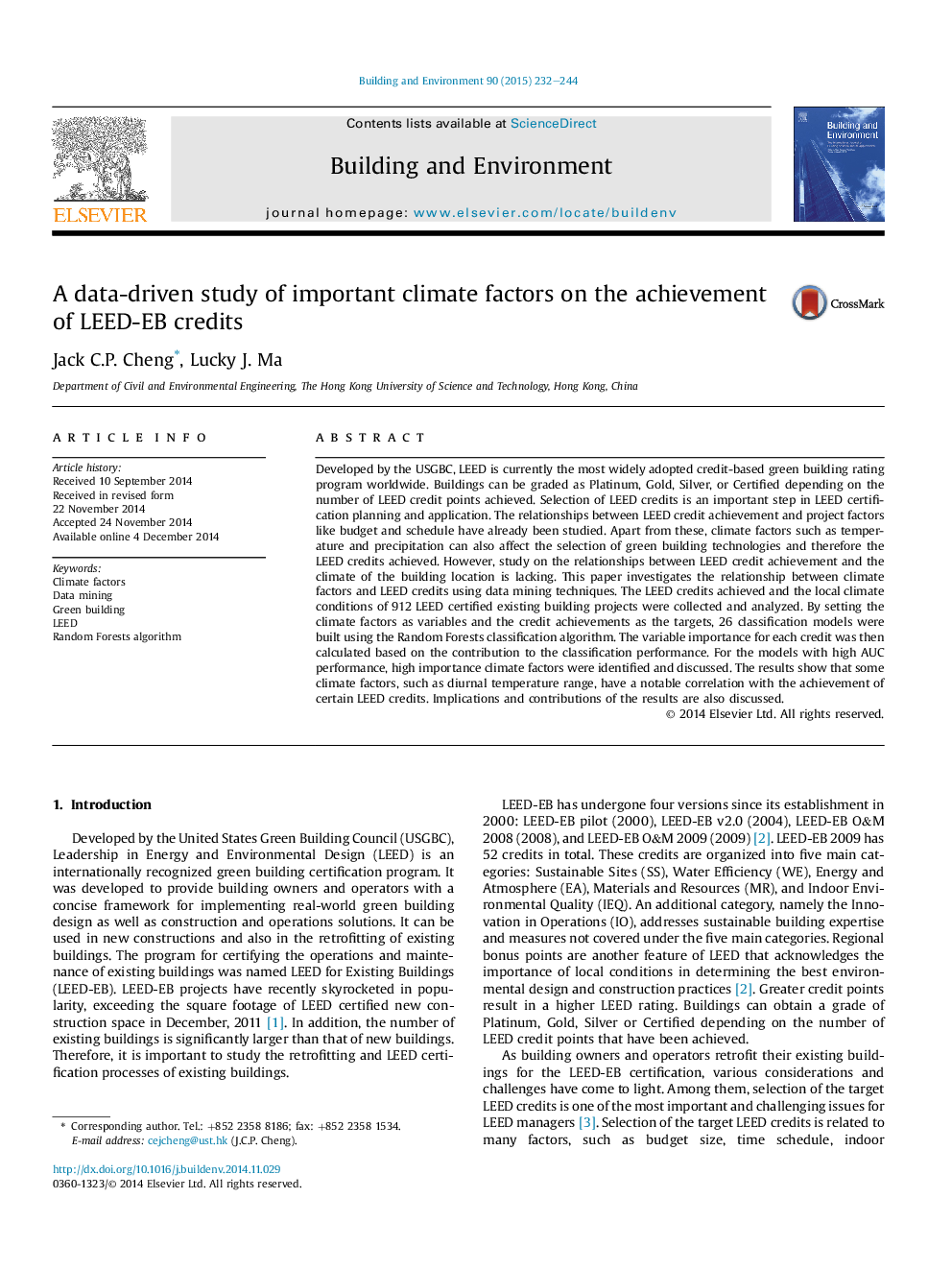| کد مقاله | کد نشریه | سال انتشار | مقاله انگلیسی | نسخه تمام متن |
|---|---|---|---|---|
| 247873 | 502530 | 2015 | 13 صفحه PDF | دانلود رایگان |

• The credits achieved and the climate conditions of 912 LEED-EB cases were analyzed.
• The achievements of 9 credits show significant relationship with local climate.
• AUC criteria help identify important factors in classification models.
• Local diurnal temperature range can help achieve LEED-EB credits such as SSc4.
Developed by the USGBC, LEED is currently the most widely adopted credit-based green building rating program worldwide. Buildings can be graded as Platinum, Gold, Silver, or Certified depending on the number of LEED credit points achieved. Selection of LEED credits is an important step in LEED certification planning and application. The relationships between LEED credit achievement and project factors like budget and schedule have already been studied. Apart from these, climate factors such as temperature and precipitation can also affect the selection of green building technologies and therefore the LEED credits achieved. However, study on the relationships between LEED credit achievement and the climate of the building location is lacking. This paper investigates the relationship between climate factors and LEED credits using data mining techniques. The LEED credits achieved and the local climate conditions of 912 LEED certified existing building projects were collected and analyzed. By setting the climate factors as variables and the credit achievements as the targets, 26 classification models were built using the Random Forests classification algorithm. The variable importance for each credit was then calculated based on the contribution to the classification performance. For the models with high AUC performance, high importance climate factors were identified and discussed. The results show that some climate factors, such as diurnal temperature range, have a notable correlation with the achievement of certain LEED credits. Implications and contributions of the results are also discussed.
Journal: Building and Environment - Volume 90, August 2015, Pages 232–244